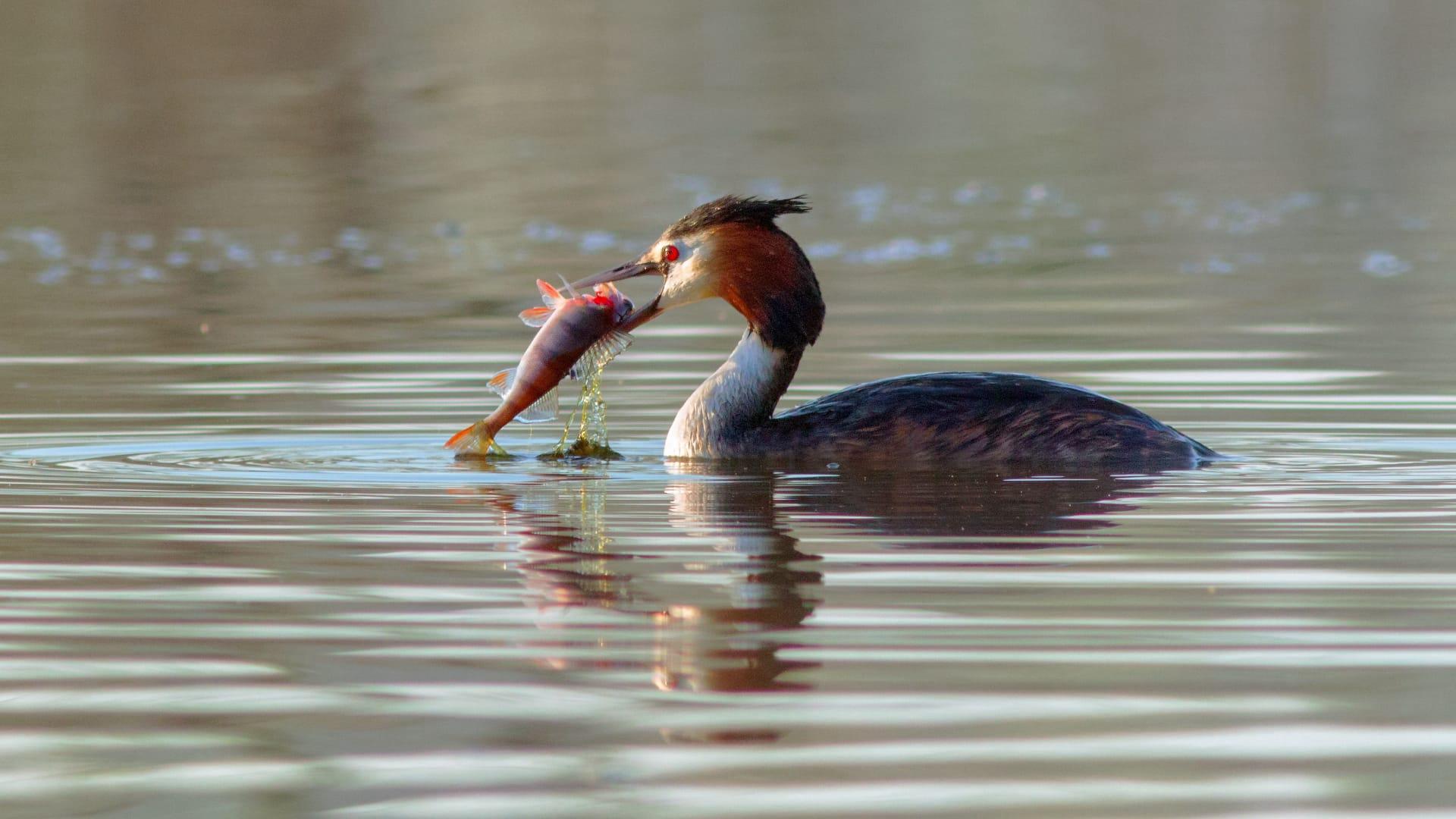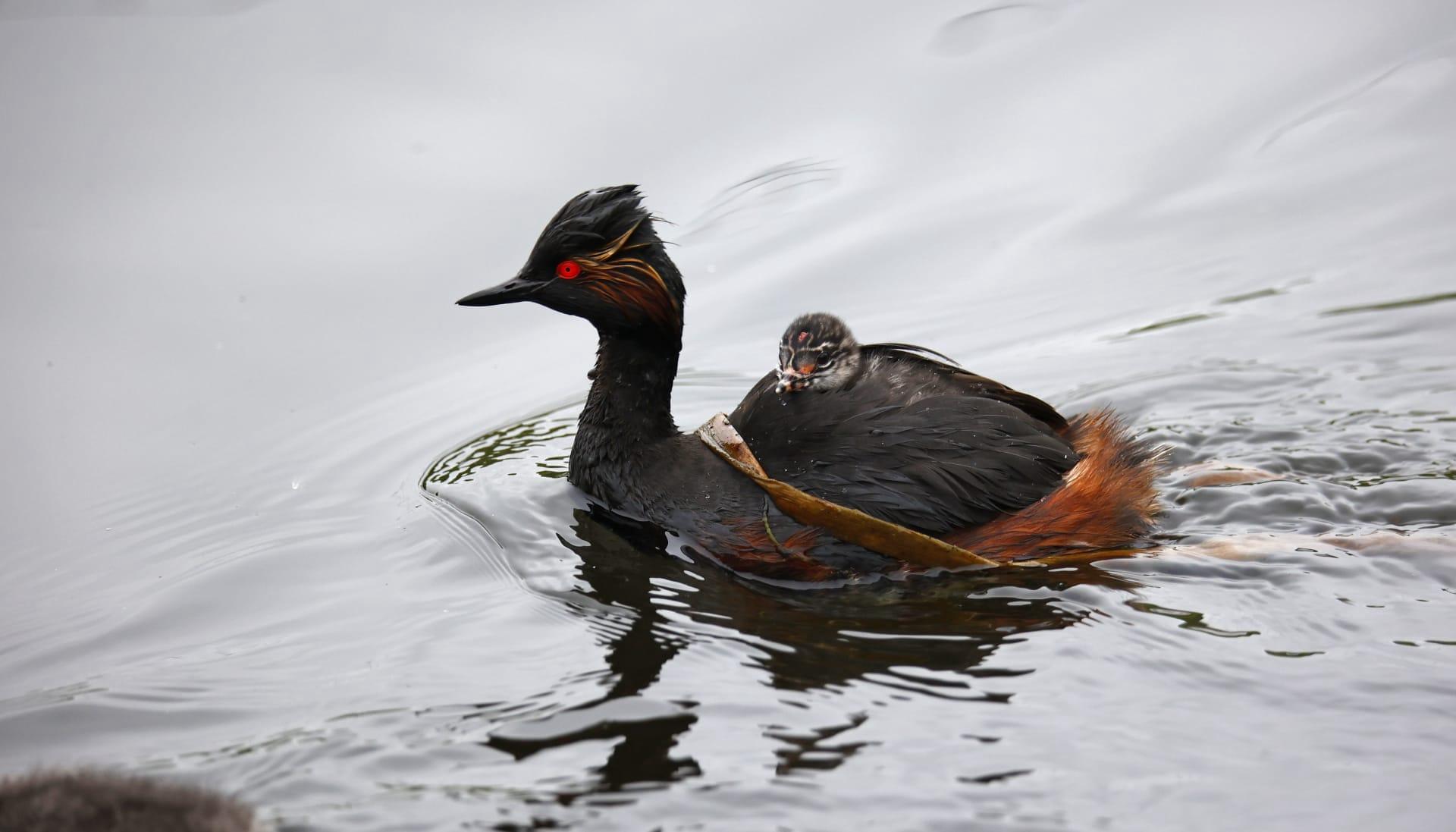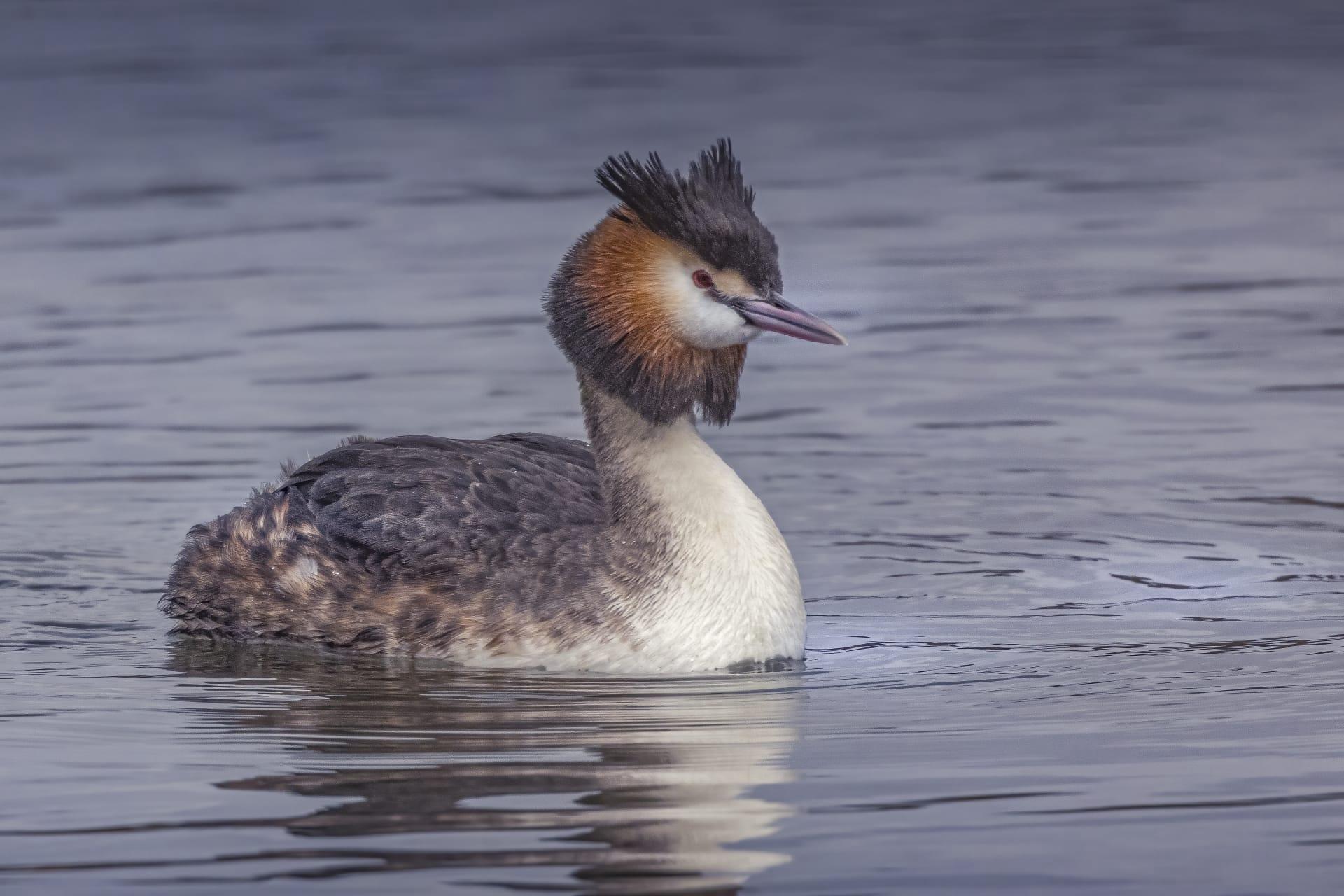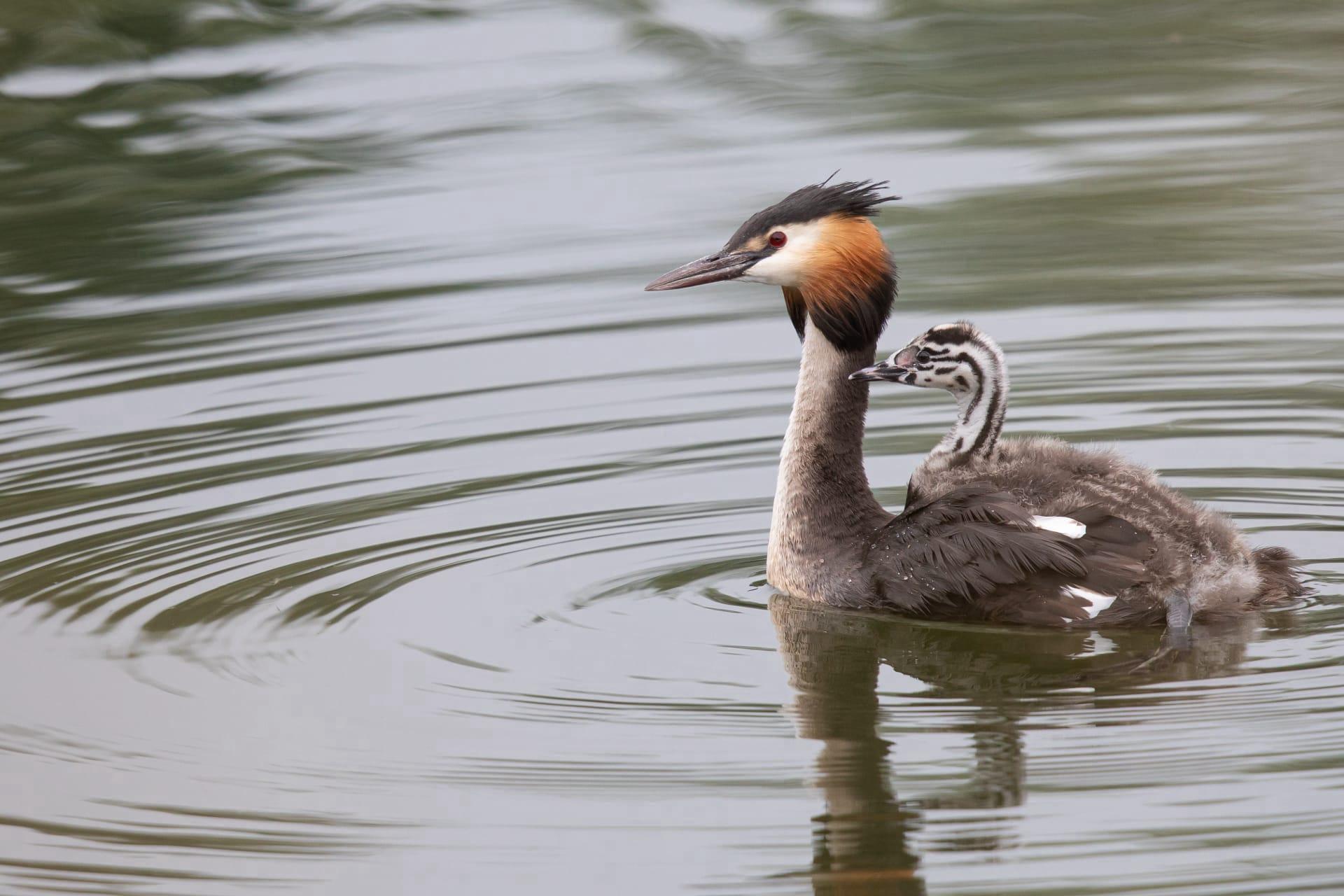Grebe
- Home /
- Mini Encyclopedia /
- Animal /
- Grebe
1
Grebes, belonging to the family Podicipedidae, are fascinating water birds known for their unique adaptations to aquatic life. There are about 22 species of grebes, divided into six genera. The most widely recognized species include the Great Crested Grebe (Podiceps cristatus), the Eared Grebe (Podiceps nigricollis), and the Little Grebe (Tachybaptus ruficollis). Each species has distinct physical characteristics, such as varying plumage colors and patterns, which aid in identification. For example, the Great Crested Grebe is notable for its elaborate mating display and ornate plumage, while the Eared Grebe stands out for its eponymous feather tufts resembling ears.
Grebes are distributed globally, except in Antarctica. They are predominantly found in freshwater environments, such as lakes, rivers, and marshes, though some species also venture into saline or brackish waters. Their distribution ranges from the Americas to Europe, Africa, Asia, and Australasia. The Great Crested Grebe, for instance, is widespread across Europe and parts of Asia, while the Eared Grebe has a vast range that includes both North America and Eurasia. Migration patterns vary among species, with some like the Eared Grebe undertaking long-distance migrations between breeding and wintering grounds.

2
Question: Is it true that grebes cannot walk on land?
Answer: This is a common misconception. Grebes are indeed adapted primarily for an aquatic life, with their legs set far back on their bodies, which makes walking on land awkward. However, they are capable of walking, albeit clumsily. Their unique leg placement is a specialized adaptation for efficient swimming and diving, giving them a distinct advantage in their aquatic habitat. When on land, grebes move with a distinctive, wobbly gait, but they generally prefer to avoid terrestrial locomotion unless necessary, such as when nesting.

3
Grebes have developed remarkable strategies for survival. Their most notable adaptation is their lobed feet, unlike the webbed feet of many other water birds. These lobed toes increase surface area for more effective swimming and diving. Another key survival strategy is their diving ability. Grebes can dive up to 20 feet (6 meters) to escape predators or catch fish. Their dense plumage, which repels water, helps in buoyancy control and insulation. Additionally, grebes consume their own feathers, forming a protective plug in their stomach that traps harmful materials and aids in digestion of fish bones.
Reproduction is another important aspect of grebe survival. They are known for their elaborate courtship displays, involving synchronized dancing and diving. Nest-building is a collaborative effort, with nests often built on floating vegetation. This provides protection against land predators. The chicks are precocial, meaning they are relatively mature and mobile from the moment of hatching. This early independence is vital for their survival in a water-based habitat.

4
In ecosystems, grebes play a significant role as both predators and prey. As adept fishers, they help maintain fish populations, preying mainly on small fish and aquatic invertebrates. This predation can be crucial in controlling overpopulation of certain fish species, thus maintaining a balanced aquatic ecosystem. Grebes also consume large quantities of aquatic insects and their larvae, contributing to the control of insect populations in their habitats.
Grebes themselves are prey for larger predators, such as eagles, large hawks, and certain mammalian predators like foxes. Their presence in an ecosystem indicates a healthy aquatic environment, as they require clean, unpolluted water with abundant fish for survival. Thus, grebes serve as important bioindicators, signaling the overall health of their aquatic habitats. Their nesting habits also promote the growth of aquatic vegetation, as their activities can help disperse plant seeds.

5
Film: "Dancing on Water" is a captivating documentary from the United Kingdom, released in 2017. It explores the life and behaviors of the Great Crested Grebe, particularly focusing on their elaborate courtship dances and mating rituals. The film provides an intimate look at these birds' lives, highlighting their adaptation to aquatic environments, parenting, and survival challenges.
Book: "The Secret Life of Grebes" by Dr. Sarah Benson, published in the United States in 2019, offers a comprehensive exploration of grebe biology and ecology. Benson delves into their unique physical adaptations, social behaviors, and the challenges they face due to environmental changes. The book is rich with photographs and personal anecdotes from the author's fieldwork.
Book: In "Wings on Water: The World of Grebes", Australian author David Attenborough, published in 2021, narrates the global journey of various grebe species. This book examines their migration patterns, ecological significance, and the impact of climate change on their habitats. Attenborough's vivid storytelling and scientific insight make this book both educational and engaging.